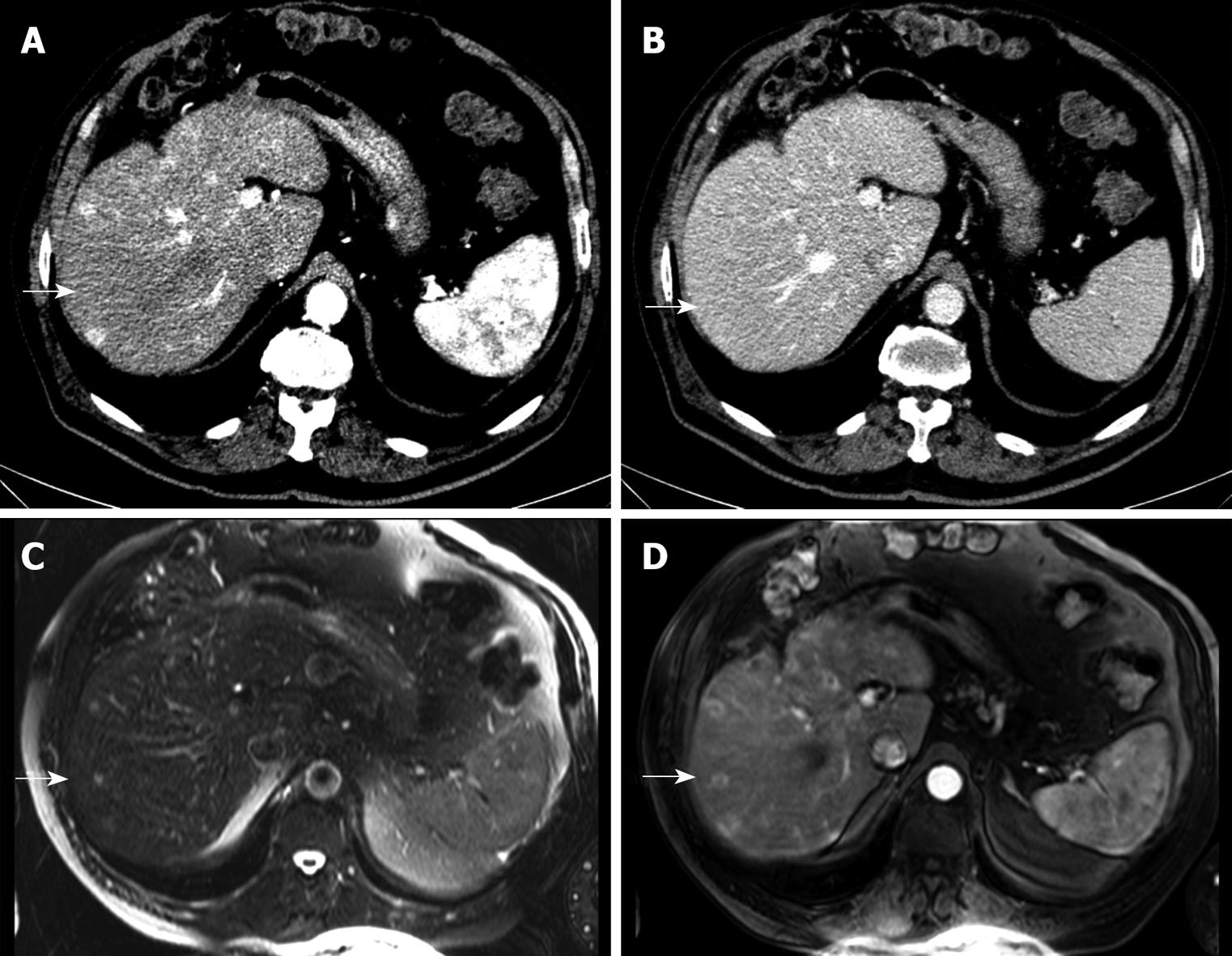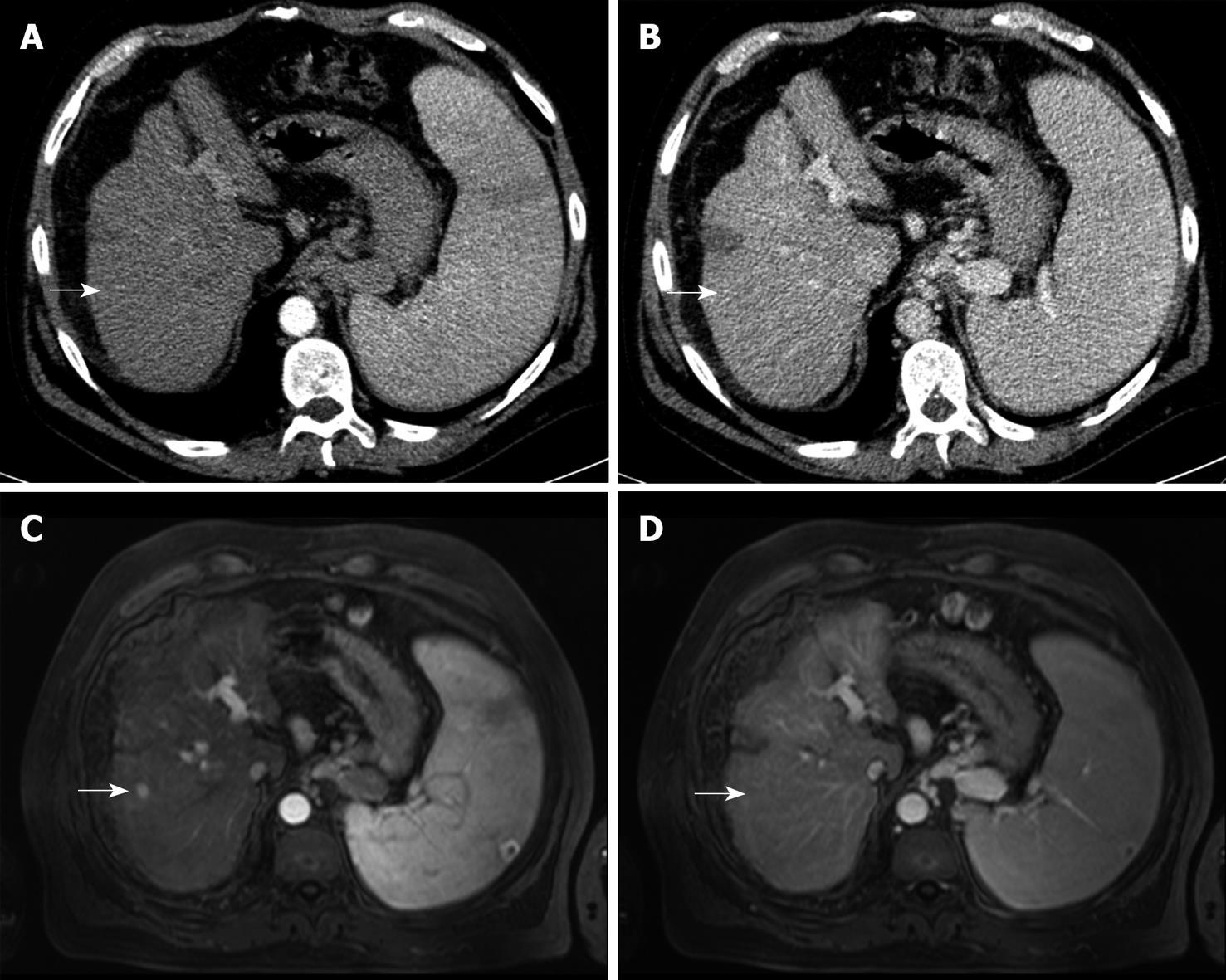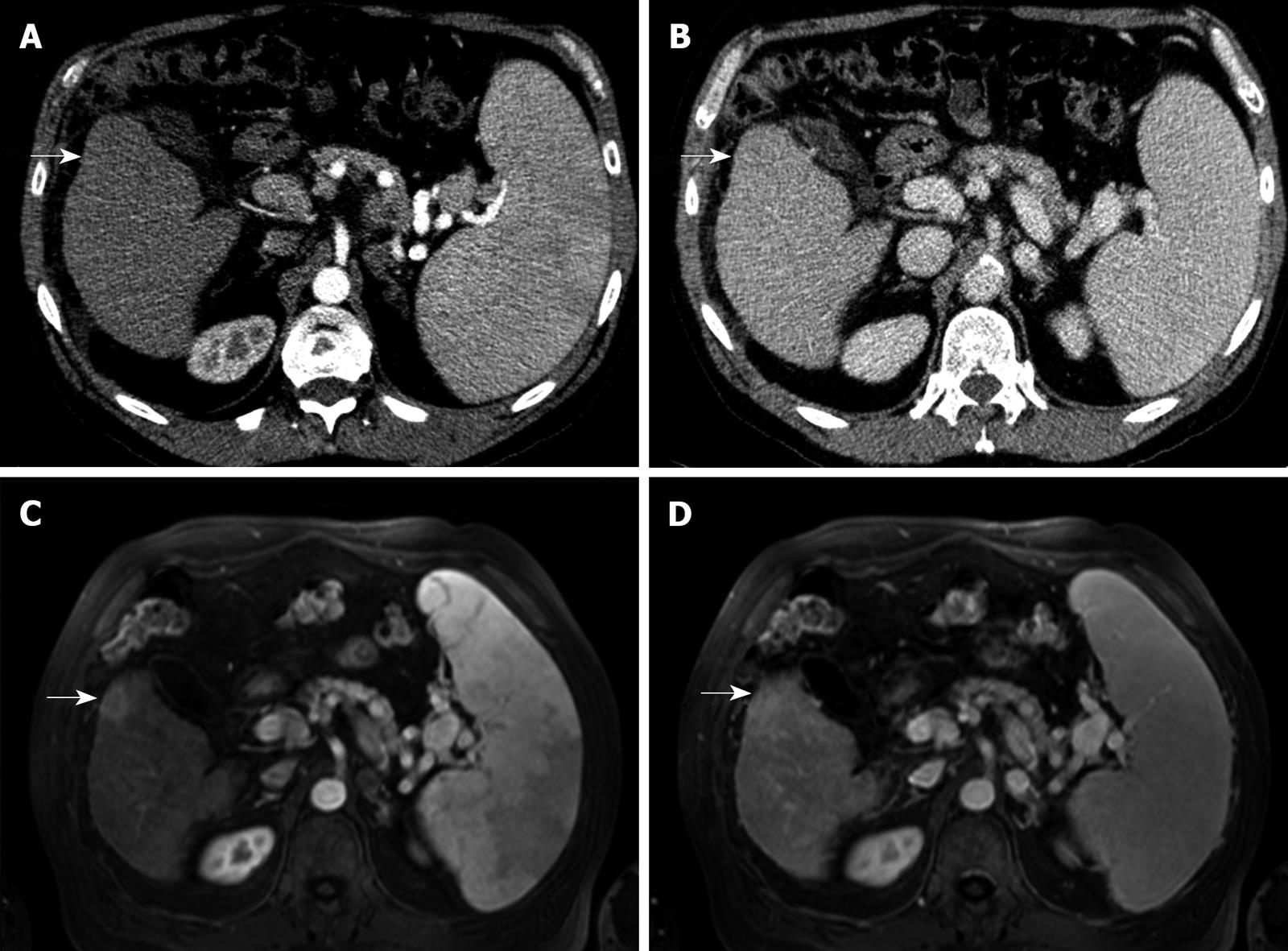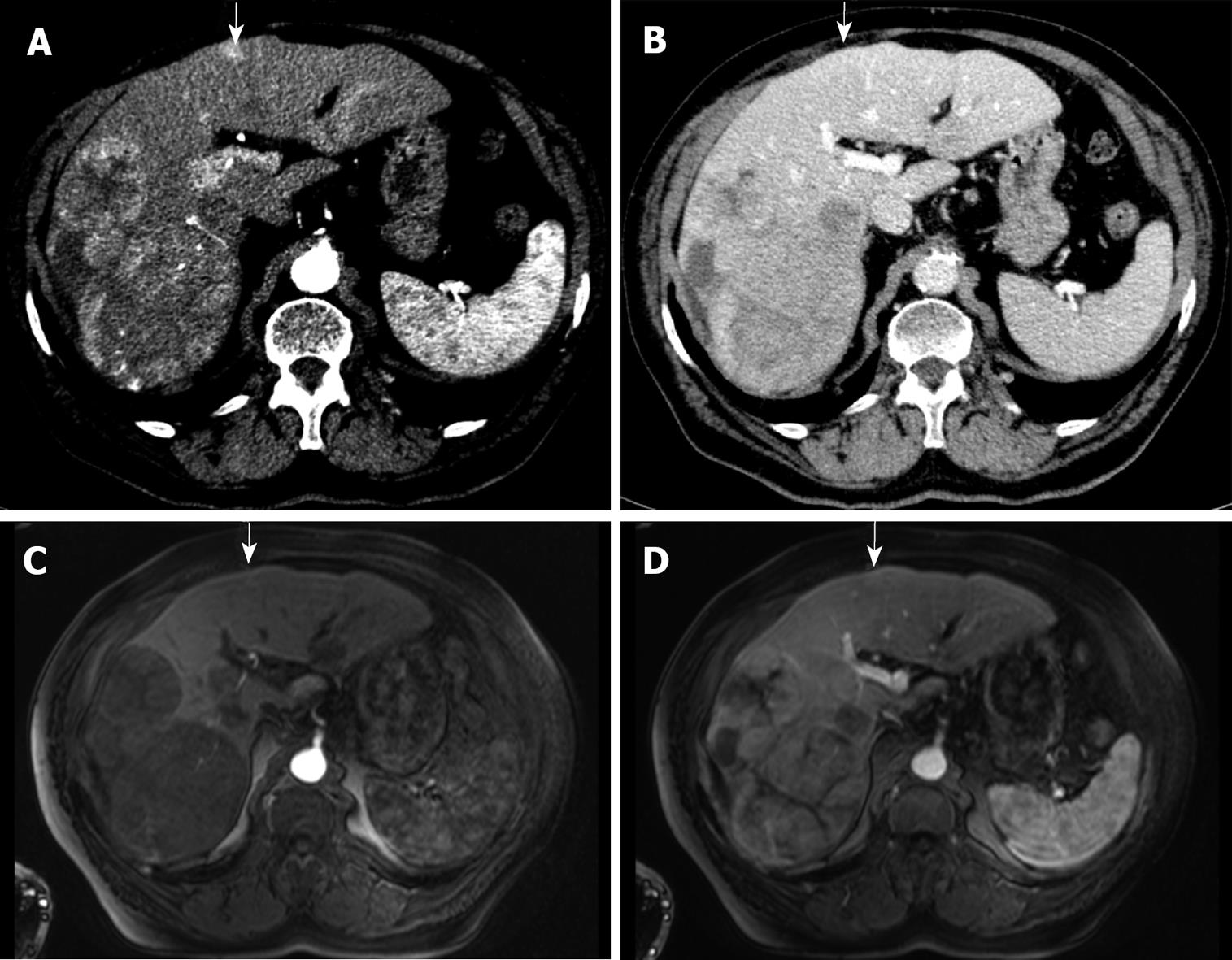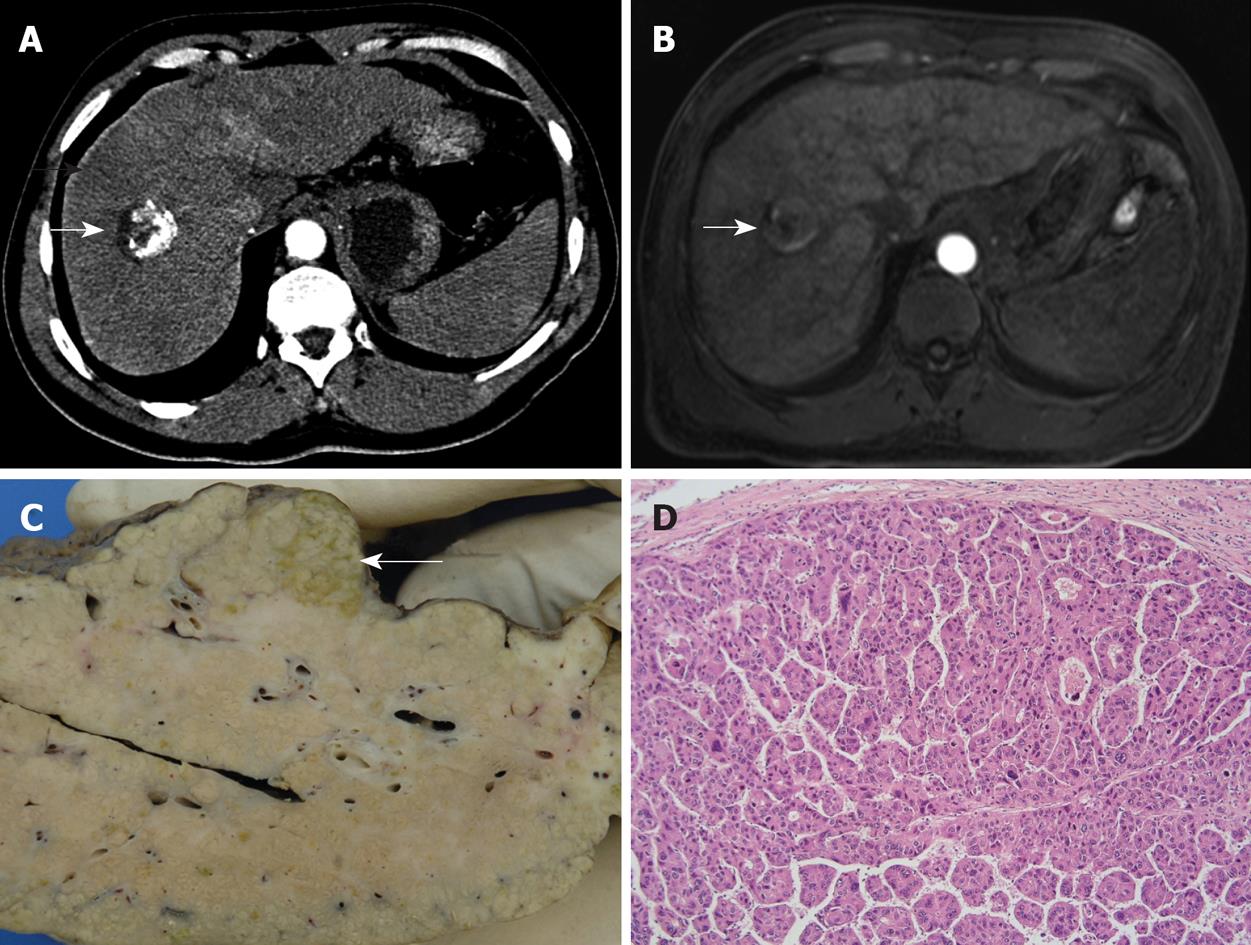Copyright
©2009 The WJG Press and Baishideng.
World J Gastroenterol. Dec 28, 2009; 15(48): 6044-6051
Published online Dec 28, 2009. doi: 10.3748/wjg.15.6044
Published online Dec 28, 2009. doi: 10.3748/wjg.15.6044
Figure 1 71-year-old man with biopsy-proven hepatocellular carcinoma (HCC).
Detection of an additional tumor nodule by magnetic resonance imaging (MRI), size 12 mm (size category ≤ 15 mm). Multidetector computed tomography (MDCT) demonstrates two hypervascularized tumor nodules in the contrast-enhanced arterial phase (A, arrow) but not in the portal venous phase (B, arrow). MRI arterial phase depicts one more tumor nodule (arrows) in the T2w (C) and the T1w contrast-enhanced early arterial phase (D).
Figure 2 70-year-old man with biopsy-proven HCC.
Detection of an additional tumour nodule by MRI, size 10 mm (size category ≤ 10 mm). MDCT does not show any contrast enhancement in the arterial (A, arrow) or portal venous phase (B, arrow). MRI arterial phase depicts one more tumour nodule (C, arrow) which is hypo- to isointense on the portal venous phase (D, arrow).
Figure 3 70-year-old man with biopsy-proven HCC.
Detection of an additional tumour nodule by MRI, size 19 mm (size category ≤ 20 mm). MDCT demonstrates no hypervascular enhancement in the contrast-enhanced arterial phase (A, arrow) or the portal venous phase (B, arrow). MRI arterial phase depicts a hypervascularized area in the T1w phase (C, arrow) which became isointense in the portal venous phase (D, arrow).
Figure 4 82-year-old man with biopsy-proven HCC.
Detection of an additional tumour nodule by MDCT. The contrast-enhanced arterial phase MDCT demonstrates large tumours in the right liver lobe and one additional hypervascularized nodule in segment 4 (A, arrow) but not in the portal venous phase (B, arrow). Contrast-enhanced MRI depicts the large tumours in the right liver lobe but not in segment 4 (arrows) in early arterial phase (C) and portal venous phase (D).
Figure 5 Correlation of tumor sizes measured with MDCT and MRI using a scatterplot.
There is a tendency towards greater diameters on MRI compared to MDCT (y = 1.08x + 3.2).
Figure 6 54-year-old man with biopsy-proven HCC.
False-negative finding in the two modalities. Contrast-enhanced early arterial and portal venous phase MDCT (A) and arterial and portal venous phase MRI (B) detected a 3 cm tumour in the right liver lobe (A, B, arrows) but failed to detect another tumour nodule at the posterior surface of the left liver lobe. The explanted liver specimen clearly depicts this additional 2 cm tumour nodule on gross-sectional pathology (C, arrow) and histology (D, 10 × magnification, HE staining).
-
Citation: Pitton MB, Kloeckner R, Herber S, Otto G, Kreitner KF, Dueber C. MRI
versus 64-row MDCT for diagnosis of hepatocellular carcinoma. World J Gastroenterol 2009; 15(48): 6044-6051 - URL: https://www.wjgnet.com/1007-9327/full/v15/i48/6044.htm
- DOI: https://dx.doi.org/10.3748/wjg.15.6044













